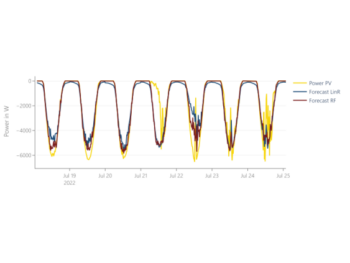Interaktive system architecture for Harmon-E (unIT-e²) field trials
Partners collaborating in the Harmon-E cluster which is part of the unIT-e² research project developed the system architecture for the upcoming clusters field trials1. The interactive system architecture displayed below shows all use-cases which will be tested in the field. A distinction is made between use-cases concerning single family homes and multifamily homes/workplaces since both sites come with their own sets of requirements.
Shown are all relevant stakeholders and technical components (without specification of a measurement concept). Different datatypes (e. g. communication data, measurement data according to TAF, prices / price signals) are marked with dedicated symbols. In some instances are marked with the required standard. The following figure shows a simplified representation of the system architecture without corresponding differentiation of the data and information flows.
Figure: Simplified representation of the system architecture Harmon-E (unIT-e²) field trials
Interactive, web-based use case representation
The major benefit of the system architecture developed in Harmon-E is the interactive character of the web-based representation. In this way, it is possible to display a selection of use cases by activating or deactivating them via the respective buttons. In accordance with the use case selection, only the necessary data and information flows are displayed. This allows individual case analyses to be conducted without having to look at an overly complex system diagram. In addition, the superimposition of several use cases can be examined in order to identify synergies or conflicts.
This takes you to the interactive representation of the system architecture.
This research was conducted as part of the activities of FfE in the project “unIT-e² – Living Lab for Integrated E-Mobility”. The project is funded by the Federal Ministry for Economic Affairs and Climate Action (BMWK) (funding code: 01MV21UN11).




